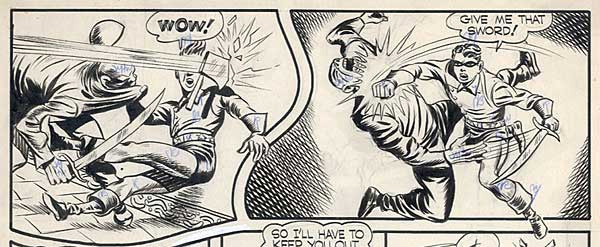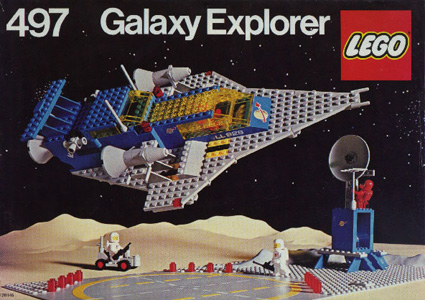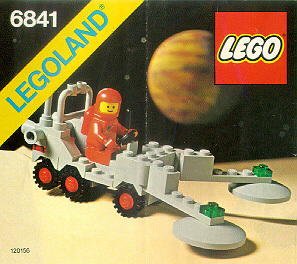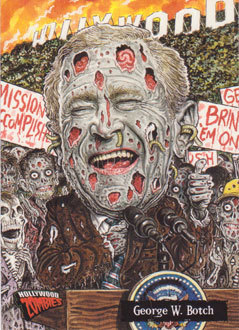On a day when Jasper Johns' Flag painting sold at Christie’s for a hefty $28.6 million dollars, a story appeared on Bleeding Cool Comic News about a 1941 Joe Simon and Jack Kirby Captain America page that had been re-listed on eBay after its previous buyer had failed to come through on the $38,000 winning bid. A few days later, the page sold for $20,601, a figure that amounts to 1388 times less than the cost of the Johns oil painting. Given the opportunity to choose between a single Jasper Johns Flag painting or 1388 pages of high quality golden age comic art, one imagines even the most seasoned collector would deliberate—if only for a moment—over which of the two lots they might prefer. And though the works are of a vastly different kind and purpose, it seems a worthwhile inquiry into what makes their cultural and financial valuations so disparate.
The Johns Flag painting, of course, is iconic, a staple image in the Pop Art chapter of most art history textbooks, while the Joe Simon-Jack Kirby page, though respected, has a fame and appreciation limited to a much narrower audience of comic historians and aficionados. But are their current values justified, or are these the early signs of a larger disequilibrium, one which may eventually balance out in favor of an increase in the prices for original comic art?
Commentary on Wikipedia states that one of the great achievements of John's Flag painting is that it desaturates the flag, as a symbol, of its iconic power, "a visual object, divorced from its symbolic connotations and reduced to something in-itself." But this interpretation runs counter to our experience, as the image of the flag as an icon is the first point of reference from which we begin to relate to the painting, and to suggest that somehow the omnipresent American flag at it's core somehow no longer signifies itself, though conceivable, is a stretch. Rather, placing the American flag as the sole subject of a painting in the context of the visual arts tradition, with all its hyper-dense, multilayered connotations, is the truly revolutionary act. How do we reinterpret the flag when we consider it as a visual art object with all of the analytical tools that this rich tradition has provided over the centuries? At its most subversive, this most common of all images is seen from a new perspective, enriched within a new context unlike any other from which we had previously come to associate with it, and, in the process, dangerously, the artwork alters the meaning we attribute to the icon itself.
The Captain America page is another beast entirely. The intact original artwork of page 8 of Captain America #6 from 1941, created some 15 years before the Johns painting, depicts an action packed scene of Captain America and his sidekick Bucky fighting a series of anonymous Japanese villains under the dark specter of World War II. Drawn in pencil and ink on white paper, the page is thought to have been produced by legendary comics duo Joe Simon and Jack Kirby, creators of Captain America and, later on, the Boy Commandos, which at their zenith sold over a million copies an issue (to put that in perspective, X-Men sold about 250,000 copies when they dominated the market in the 1980s, and, today, a comic that sells 40,000 copies is considered a success). Though the authorship of the page has been called into question, it seems unlikely anyone other than Joe Simon and Jack Kirby were responsible for its creation, considering the unusually high quality of the art, especially when one observes the hands, boots and draped clothing, which all have a trademark bulky Kirby-esque look and feel.
The page is divided into two main sequences, the top half focused on Bucky battling a villain, while Captain America dominates the bottom half in a separate fight scene. The drama begins on an action packed note, Bucky dodging a flying axe, convincingly depicted as fast, heavy and damaging, the speed lines covering the young hero's eyes almost as they blaze past our own. The comic panel curves outwards behind him, as if to emphasize the force of the axe hitting the wall, while the villain, hunched over as Bucky draws him closer by the shirt, directs a knife towards the young hero's head, adding further emphasis to the focal point of the drama. Bucky's body, forced backwards in the same direction as the axe, is thrown beyond the confines of the panel, adding further drama and impact to the scene. Bucky yells “WOW!” in classic comic fashion, triggering the viewer's own reaction to the fast paced action. In the next panel, Bucky retaliates by stealing the villain’s sword and punching him in the same motion, shouting “GIVE ME THAT SWORD!” The action is surrounded by shadowy cross-hatching inside the panel's edges that creates both focus and atmosphere, a trick commonly used in graphic design to this day but which can also be traced back to Renaissance oil painting.
In the following row, Bucky returns the villain's sword, throwing it across the three panels in an amazing depiction of energy that fully persuades the reader of the absolute force of the throw, splitting the wall and pinning the villain to the wall. Bucky yells, “BOYS WHO THROW HATCHETS GET IN TROUBLE!” suggesting to the reader that Bucky is the ‘boy’ he is referencing, followed by “SO I’LL HAVE TO KEEP YOU OUT OF MISCHIEF!”, creating a humorous reversal of the boy-hero Bucky calling the grown Japanese men 'boys'. The last panel depicts a racially stereotyped Japanese character with what looks like mock Japanese text, so unthinkable in today's climate of political correctness that it borders on being classic, misguided as the generalizations may be. Like the first panel, all the characters break out of the frames which contain them, adding dynamism to each of the panels and to the page as a whole.
The bottom half of the page continues the same breathtaking pace as Captain America rolls into the panel fighting two villains simultaneously, while the omniscient narrator interjects, “Meanwhile THE SHADOW OF DEATH HOVERS OVER CAPTAIN AMERICA --”. In the following circular panel, a villain plunges a sword into Captain America’s shield, which “SAVES CAP FROM BEING BEHEADED!” while the hero simultaneously restrains another villain under his weight. Outstretched, Cap strikes back in the following row, laying a massive, defeating blow into the chest of his opponent, while yelling in pure pop, 1940s American English, “HERE! TRY SOME OF MY BRAND”. The final panel transitions through an electrical divider, heightening the intensity of the scene, zooming in on Captain America's head and fist as he declares, “AND NOW MISTER FANG, I’M READY FOR YOU!”, a well crafted, though somewhat racist pun, combining the sound of a traditional Japanese name with the insidious sounding animalistic incisor tooth.
Despite these impressive accomplishments, many good reasons justify the higher market valuation for Johns' Flag painting. Unquestionably, it has more poetic depth than the Captain America fight scene. Johns was making far reaching speculations on identity, patriotism, the mass media, and the consumer society and, perhaps most importantly, he was the first to isolate the mass media icon as a subject for contemplation, which was highly influential on the Pop art movement that followed, which, in turn, had a transformative effect on the culture. In this respect, the painting can be legitimately considered a landmark in the history of art, as well as human thought as a whole.
Johns' Flag also has a title, distinguishing it from the comic page in the sense that the painting is a self-conscious presentation of a unified artwork, while the comic page is a fragment of a larger work (the full comic book) and therefore lacks the unified cohesion of the painting. Were the comparison with a comic cover rather than an inside page, however, this distinction would be much less pronounced.
Interestingly, many of the themes obtained in the painting are present in the Captain America page, though they are brought up in a more accidental manner, not because the comic artists wished to convey profound sentiments on the topics, but rather because they were immersed in them. One could say with a fair degree of certainty that Simon and Kirby were not attempting some "meta" statement on the subject matter of America and its role as an icon in the depths of our unconscious minds. Nevertheless, an accidental poetry remains in the comic page of the kind we might find in the hieroglyphs in the tomb of Ramses II. In a parallel fashion, these artworks were not created by individuals questioning the myths of their day, but were rather enforcing them using art as a form of nationalistic propaganda. Do we consider ancient egyptian tomb paintings any less works of art as a result? Were the comic page exhibited among the paintings we traditionally view in the art gallery, I suspect it would retain an unusual popularity among the crowds, and not simply because it's easier to consume, which it is, but for it's artfullness. Seen outside of our cultural biases, comic artists also share many of the challenges of Italian medieval and renaissance painters, who were often charged with the task of portraying multi-sequenced religious narratives.
As far as the comic page's incompleteness is concerned, do we consider fragments of ancient art, such as the Victory of Samothrace, any less of an art object because a part of it is missing? Further, were the paintings in the caves of Lascaux ever given titles by their creators? It appears that many of our assumptions about what constitutes an art object is defined by gallery-centric notions, while the ultimate test of an artwork's value is whether it is returned to, for its own sake, over the course of time. Does it continue to communicate something unique to which we can appreciate and relate over the ages? As we move into the future and increase our distance with the 20th century, it's possible that comic art will become more closely associated with the fine art of the century as the cultural biases towards comics fade, and a newer, anthropological perspective takes shape.
As archeological artifacts demonstrate, the financial value of a work is commiserate with its esteem in the culture, regardless of whether it was intended as art for art's sake. In this respect, it's easy to imagine original comic art, especially covers, commanding much greater prices in the near future, as the inherent beauty of these pieces becomes increasingly recognized. Renowned TIME magazine art critic Robert Hughes once called underground cartoonist Robert Crumb, "the American Breughel", yet his works, among the most expensive of original comic art, still sell for a fraction of much less important pieces classified as 'fine art'. So there is a bias, but one which is becoming increasingly undermined as an upward trend towards higher prices takes hold. The cover of Mr. Natural #1, for example, sold in 2007 for a record price of $100,000, which, if "cultural importance" is our gauge, is very cheap. In one image, Mr. Natural evokes the entire hippy counterculture revolution; ironically, it's difficult to think of a painting in the visual arts that captured the hippie ethos as effectively. In a sense, it's perfectly reasonable to see it best represented in the form of comic art, rather than an oil painting.
Other sales of original comic art pages, almost exclusively covers, confirm the trend. The cover to Daredevil #158 featuring the Black Widow by Frank Miller, from his celebrated run on Daredevil in the 1980s, recently secured $100,000 at auction. Even more impressive, an EC Comic cover by Frank Frazetta of Weird Science-Fantasy #29 (1955) sold in a private sale for $380,000, whileTodd McFarlane's sensational cover of Amazing Spider-man #328 sold for a record breaking $657,250 in 2012. Considering the sales of original copies of Action Comics #1 and Detective Comics #27 have topped $1 million at auction, it would seem the million dollar original comic art piece beckons.
For all the arguments in favor of an undervaluation of comic art, the fact of the matter is that artworks in the fine arts tradition are more culturally valued than comic art, and, most of the time, for good reason. But with the recent increase in the prices for fine art, alongside the heightened ambiguity in the inherent value of contemporary art, the disparity is becoming increasingly imbalanced. Yes, the Johns and Simon-Kirby works are of a different order and poetic magnitude, and to suggest that the Simon and Kirby page should be worth anything near as much would be absurd. However, what it does show is that original comic art, relative to the boom in the art market, is greatly undervalued. Ask yourself, would you rather own a Hirst or a Crumb? And in 200 years, who's work will be more valuable?












